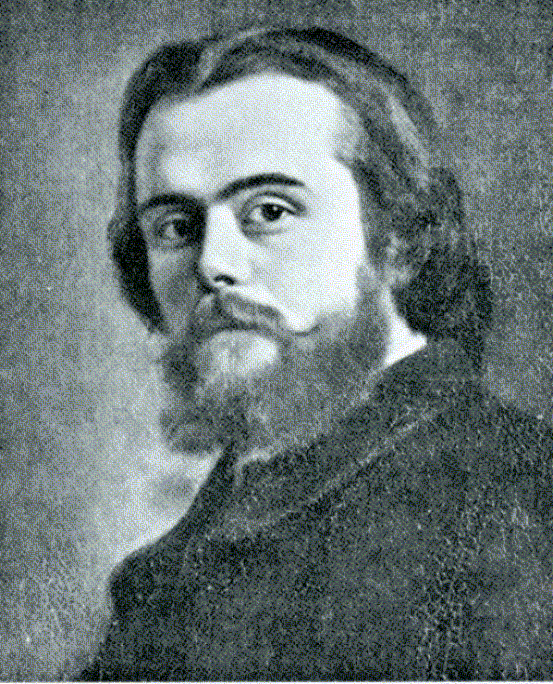| Profile | Major Works | Resources |
Léon Walras, 1834-1910


The French economist Marie-Ésprit Léon Walras (pronounced "Valrasse") has been hailed by Joseph Schumpeter as "the greatest of all economists" (Schumpeter, 1954: p.827). Walras was one of the three leaders of the Marginalist Revolution, even though his greatest work, Elements of Pure Economics, was published in 1874, three years after those of William Stanley Jevons and Carl Menger.
Nonetheless, alone among the three revolutionaries, Léon Walras set forth the new "marginalist" or "Neoclassical" theory in a formal general equilibrium setting. Thus, he endowed it with the multi-market considerations Jevons had largely avoided and the mathematical precision Menger had eschewed. Léon Walras is widely and rightfully regarded as the father of general equilibrium theory.
From any biography, the principal elements of Walras's life can be told. He was the son of the French proto-marginalist economist and schoolteacher, Auguste Walras. After spending a Bohemian youth in Paris as a novelist and art critic, Léon Walras soon followed his father's footsteps on almost every count: he adopted his father's socialist policy positions on taxation and land reform (in fact, he was a proponent of outright land nationalization) as well as his main ideas on economic theory (subjectivist theory of value, the mathematization of economics). After spending some unfruitful years in the cooperatives movement, Walras was appointed to the Academy of Lausanne in 1870. It was there that he wrote and published the first edition of his magnum opus, the Elements of Pure Economics (1874).
Léon Walras's Elements should be familiar to every modern economist, as it encompasses much of what is available to us in modern general equilibrium theory. Walras set out his Elements in progressive stages of complexity and generality. Its eight parts can be briefly summarized:
- (1) Walras provides his definition of the scope of economics, subjective value theory and the mathematical method;
- (2) discusses two-commodity pure exchange where demand and supply are derived from utility-maximization; his "auctioneer" and the tatonnement process of stability is introduced here.
- (3) introduces multi-market pure exchange; counts "equations and unknowns" to find existence; considers multi-market tatonnement with an auctioneer.
- (4) incorporates production (in early editions, with fixed technology; in later editions, with flexible technology and thus marginal productivity theory) with a no-profit entrepreneur; shows how the demand for factors is derived as an indirect demand for goods (see the "Walras-Cassel" model).
- (5) introduces his theory of capital; includes capitalization of future earnings and presents a theory of saving and credit;
- (6) introduces his encaisse desirée theory of money; sees money as providing future services and thus "desired" in a general choice problem;
- (7) considers the continuous market and a growing economy.
- (8) provides reflections on imperfect competition and monopoly.
In the aftermath of the Elements, Walras tried to build up a correspondence with virtually every important economist of the time, from America to Russia, in an effort to popularize his new theory. He found sympathizers and followers among several technically-gifted young Italians (e.g. Barone and Pareto) and Americans (e.g. Moore and Fisher). However, for the most part, he was largely ignored or dismissed by contemporary economists and mathematicians.
In 1893, Walras was succeeded in his chair by his young disciple, Vilfredo Pareto. The two men formed the core (and some argue the full extent) of what became known as the Lausanne School". While they agreed on most theoretical matters, the details of the subsequent research program were dictated more by Pareto's interests than Walras's original concerns.
Walras had envisaged his 1874 Elements as part of a larger work. However, by the 1890s, Walras's mental capacities had begun to fail and it became doubtful that he would be able to complete this grand oeuvre in the manner he had originally intended Walras hastily compiled two volumes, Studies in Social Economics (1896) and the Studies in Applied Economics (1898). Although little more than compilations of previously published articles, he still considered these books complementary to the Elements. Tellingly, the 1874 Elements are subtitled "theory of social wealth", while his 1896 book is subtitled "theory of the division of social wealth" and his 1898 book "theory of the production of social wealth." He regarded all three volumes as integral, indivisible and essential pillars for his general economic theory.
Unfortunately, most economists dismissed these last two volumes as "light" stuff or, worse, a mere platform for socialist politics. Today, as then, the Elements alone is regarded as his Walras's only "true" contribution. However, some economists continue to believe that, because his other two volumes were not taken into account, modern Neo-Walrasian G.E. theory has not adhered to Walras's original vision, either in general purpose or in detail.
Modern economists have also dismissed Walras's attempt, in a later (1896) edition of the Elements, to take credit for the discovery of the marginal productivity theory of distribution (and denouncing Wicksteed's claim to priority), not only as lacking any basis in truth but even as mean-spirited. It is widely acknowledged that Walras learnt this theorem from Enrico Barone. (although, in a striking coincidence, Walras had been handed the theorem on a piece of paper from the Lausanne mathematician, Hermann Amstein, in 1877, but had not understood the mathematics well enough the make heads or tails out of it!)
The last decade of Walras's life was spent in frustrated loneliness, bitter at the neglect of his work, incapacitated by senility and mental illness. He died on January 5, 1910.
|
Major Works of Léon Walras
|
|
Resources on Leon Walras Contemporary
Modern
|
All rights reserved, Gonçalo L. Fonseca
